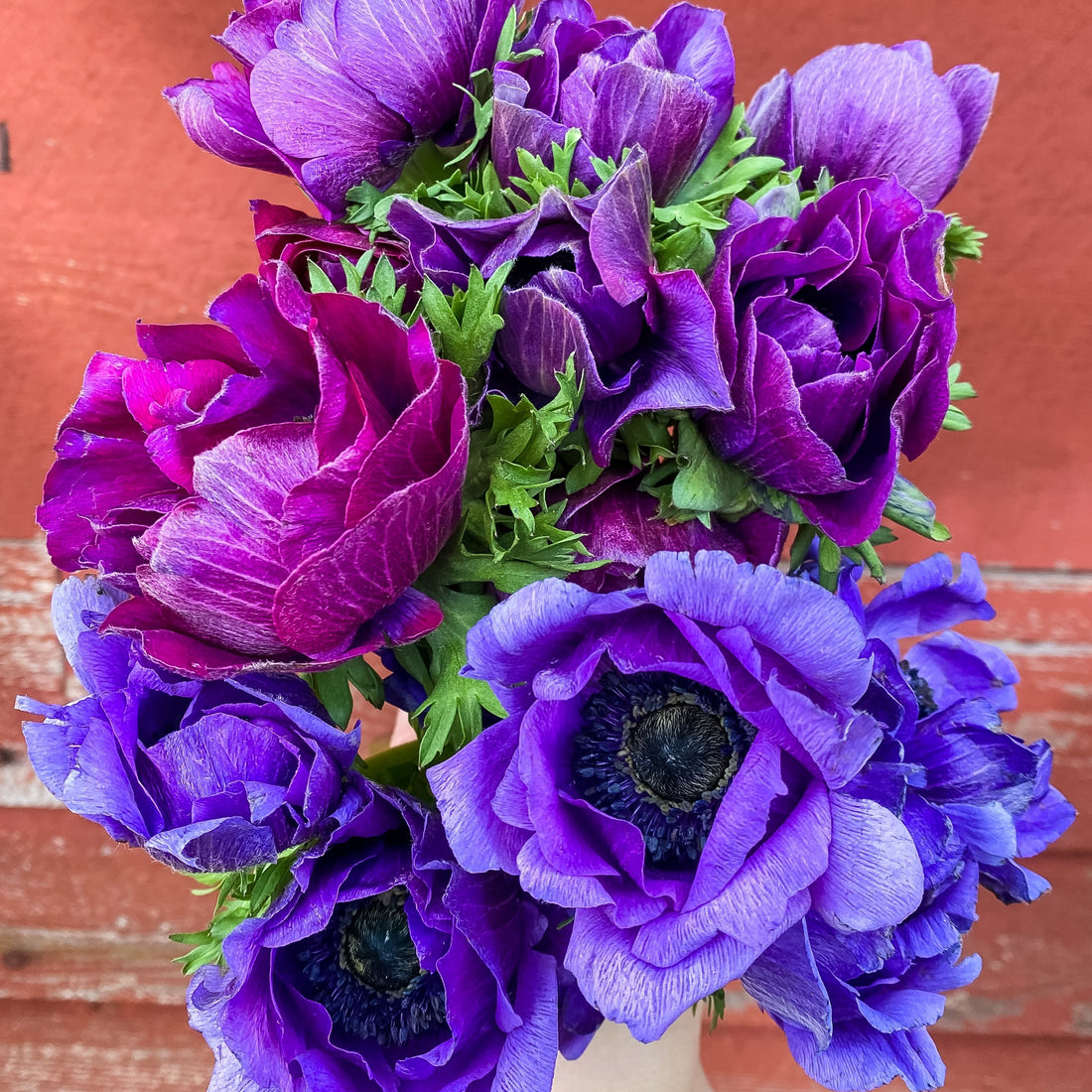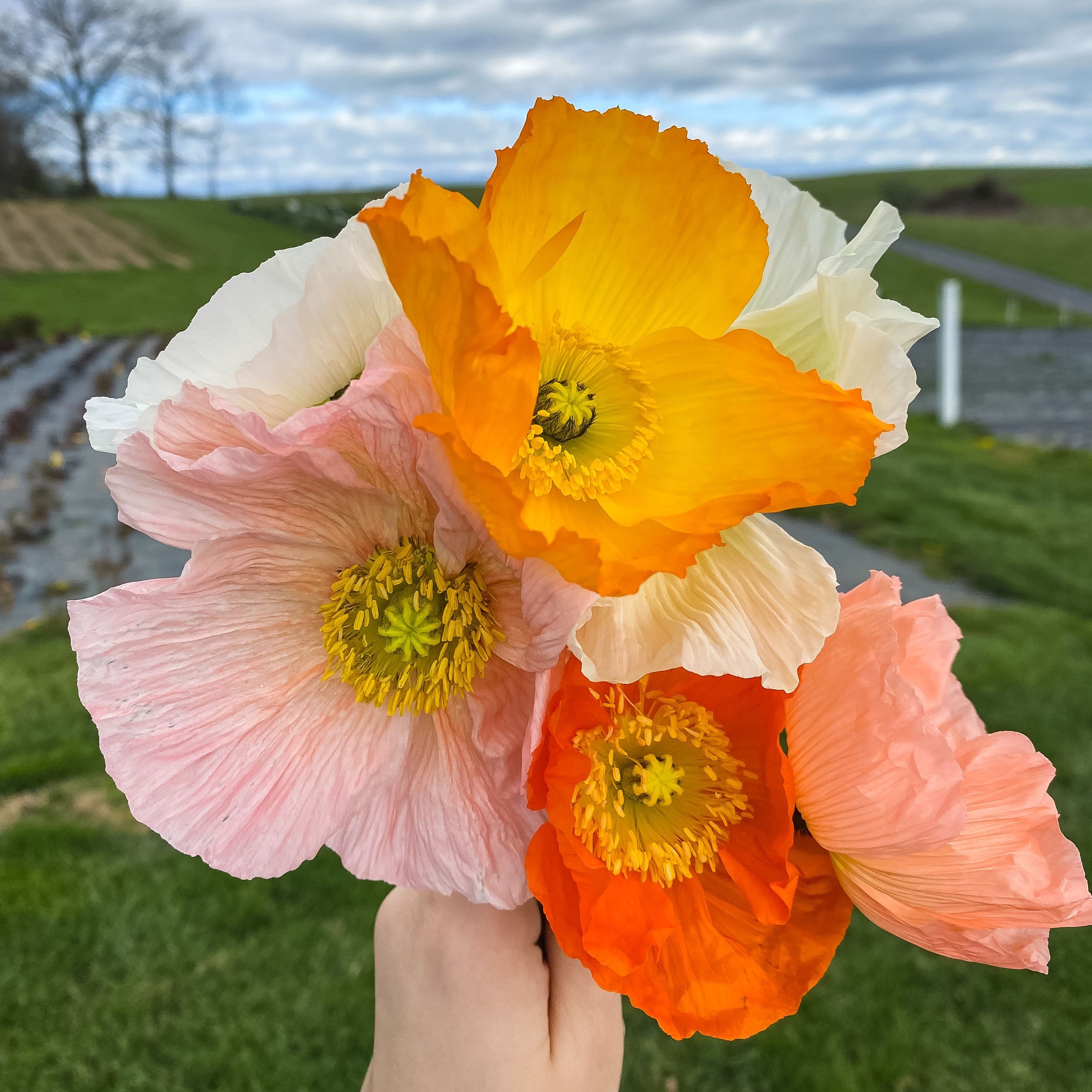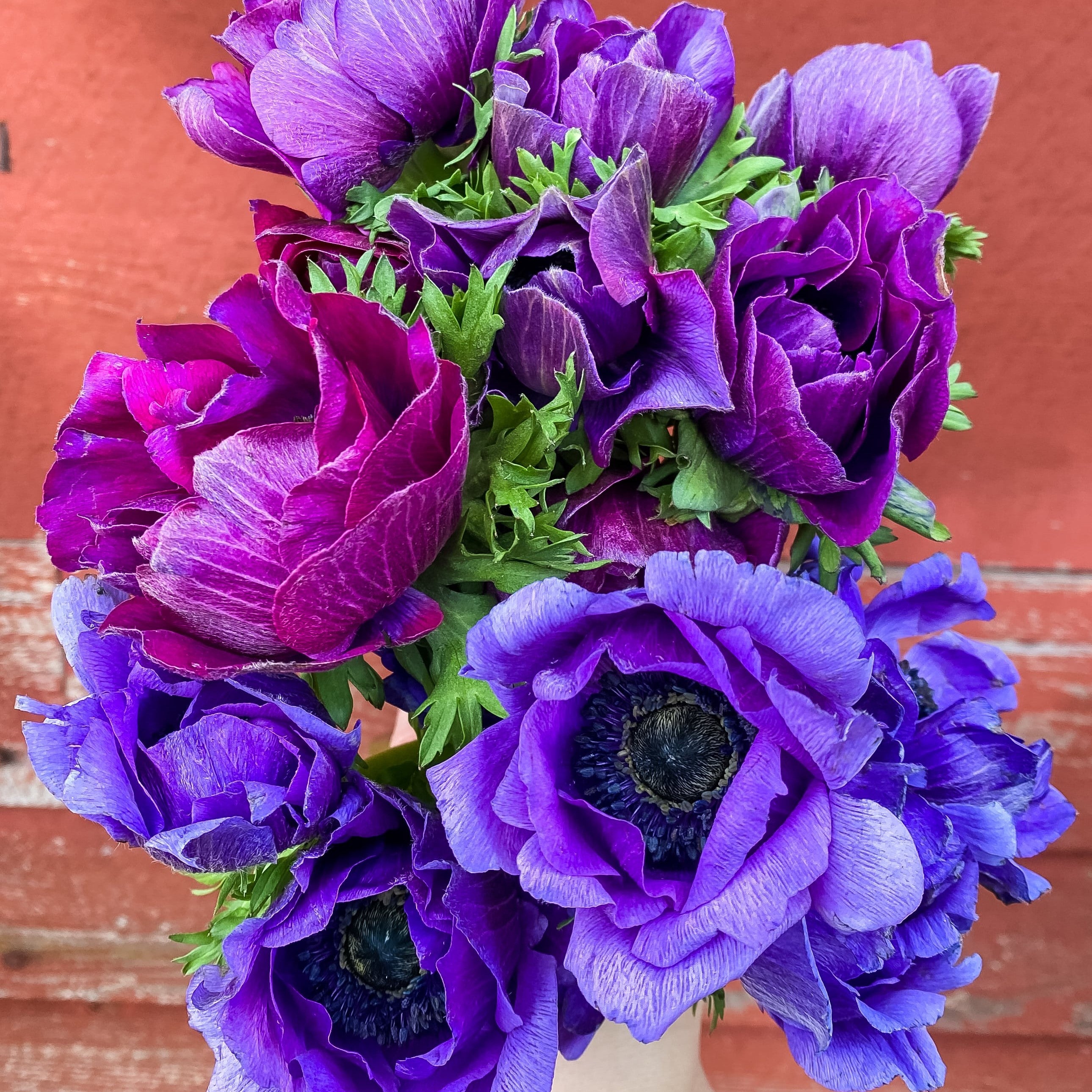When you hear “anemone”, you might think of fish (like Nemo), but it’s also the name of a really awesome flower. This was our first year growing crops in the newly outfitted heated greenhouse (read more about that here) and the anemone was first to bloom!
 |
 |
GROWING ZONE
Anemone can grow in zones 3 through 10 (USDA Plant Hardiness Zone Map), but its success depends on the variety - our farm is in zone 6b.
VARIETIES
We grow Galilee anemone, which blooms in the spring. Varieties include Bordeaux (red and purple), HHF Mix (an heirloom mix of different varieties we are unsure of), pink, and white. We also grow a white variety called Sylvestris, which blooms in the fall.
 |
 |
PLANTING
We soak corms before planting to encourage sprouting and to rehydrate them from being stored all winter, then plant them in holes and make sure they are completely covered with soil. Planting happens in mid to late fall for earlier blooms. Anemone that are planted in a heated greenhouse will bloom earlier because the temperature is more regulated, and they do not experience the cold dips in the weather that occur in our growing zone. We also plant anemone in our unheated tunnels from late fall through December so that we can extend the bloom time on the farm. Blooms open later in unheated structures because temperatures are not regulated, and they are only protected with frost cloth from freezing temperatures. Anemone, with the exception of a few varieties, are cool crops, so they grow well in spring conditions.
IN BLOOM
After planting anemone corms, make sure the soil is kept moist but not soggy. You don't want corms to dry out, which is why we also soak before planting. We really don't do anything special to them because they are an easier plant to keep alive. However, we do spray them with Neptune's Harvest Fish and Seaweed fertilizer (at a lower ratio) to encourage growth because it gives the plants an extra boost of energy by adding more nutrients to the soil. At the start of bloom season, we will sometimes cut back shorter stemmed blooms to encourage the growth of longer, more sturdy stems that we can use in bouquets. Anemone usually produce blooms for about 3 months.
 |
 |
STORAGE
At the end of growing season, we dig up corms, clean, divide, and store in a cool dark place to encourage them to go fully dormant. In general, corms should be divided at least every 3 years - new corms likely will not have enough growth so there is not much corm to divide into two. Be sure to watch for any signs of rot or mold on corms. If corms are moldy or squishy, they likely will not grow at all. We order new corms each year in case our older corms do not produce as well or have become moldy, and we can no longer plant them - better safe than sorry.
And that’s the full rundown on anemone! Personally, I think they’re an underrated flower. I hope you got to experience them in a bouquet this spring and if not, there’s always next year!




